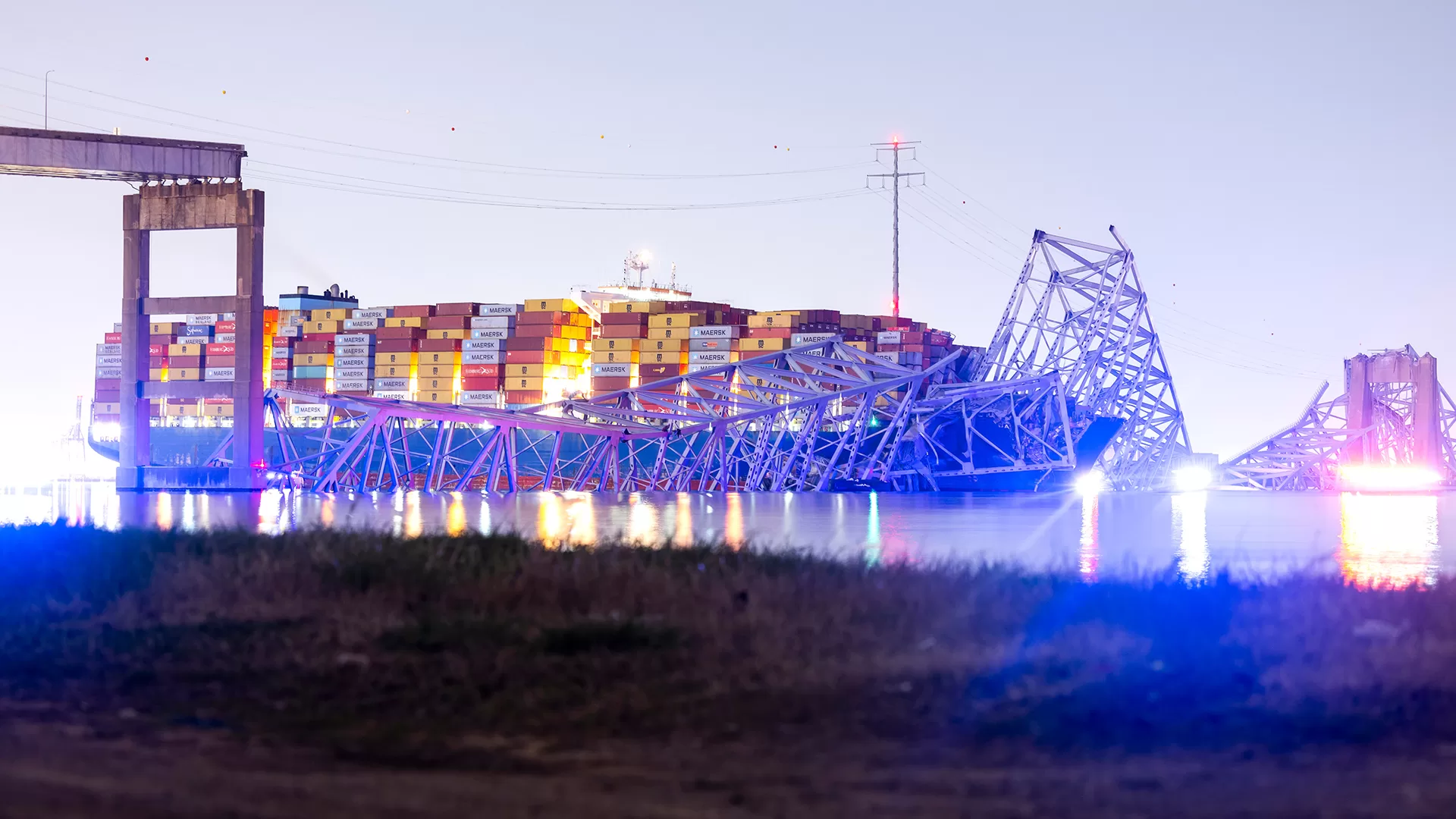Recap of events leading up to collapse
Before hitting a significant bridge early on Tuesday, a big cargo ship sailing out of the Port of Baltimore lost power and sent out a mayday call.
This gave authorities a small window of opportunity to stop traffic and attempt to evacuate the span before it collapsed into the river.
Six construction workers who had been patching potholes on the Francis Scott Key Bridge were still missing by Tuesday morning, despite the efforts of divers and other emergency personnel using boats and helicopters to look for them.
The transportation secretary for Maryland, Paul J. Wiedefeld, reported that two more people had been rescued and that one was in the hospital.
Vessel moving at ‘very rapid speed’ ahead of crash
Maryland Governor Wes Moore said the Dali container ship was moving towards the bridge at a “very rapid speed” when it crashed into the bridge.
He said crews called a “mayday’ – an emergency signal – but the vessel’s speed appeared to be too fast to avoid the incident.
However, he said the distress call did ensure more cars were stopped from crossing the bridge, which prevented more vehicles from falling into the water.
About the Francis Scott Key Bridge
Named for the author of the Star Spangled Banner, the 1.6-mile, 4-lane Francis Scott Key Bridge spans the Patapsco River, according to the MDTA. 1977 saw its opening.
As per the American Civil Engineering Society, the span is the outermost of three main Patapsco River crossings at Baltimore Harbor.
According to the society, the steel-arched bridge, which has a total length of 8,636 feet, was the second-largest continuous-truss bridge span in the world when it was constructed and is currently the second longest in the US and third longest globally.
Patapsco River was about 47 degrees when collapse occurred
At a press conference on Tuesday morning, officials stated that the ship struck the bridge at a depth of around 50 feet in the Patapsco River.
Immediately northwest of the collapsed bridge, a portion of the 39-mile river empties into Baltimore Harbor and empties into the Chesapeake Bay.
According to the National Oceanic and Atmospheric Administration, a buoy in the Patapsco River showed the water temperature was approximately 47 degrees on Tuesday morning, while the air temperature was approximately 41 degrees.
The Centers for Disease Control and Prevention reports hypothermia can happen in waters that are below 70 degrees, although it is generally believed to happen at extremely cold temperatures.
Some collision details, continued
“We are horrified by what has happened in Baltimore, and our thoughts are with all of those affected,” Maersk said in a statement.
“We are closely following the investigations conducted by authorities and Synergy, and we will do our utmost to keep our customers informed.”
During a press conference on Tuesday, U.S. Coast Guard Lieutenant Commander Erin Palmer stated that the agency’s primary objective is still search and rescue.
She made no remarks regarding the ship’s crew or other information regarding the collision.
The Port of Baltimore is currently open for truck transports, but all vessel movement into and out of the port has been suspended until further notice, according to Wiedefeld.
Meanwhile, traffic in the vicinity of the Key Bridge is being rerouted.
Some collision details
The container vessel was rented by the large maritime company Maersk and was transporting its cargo, according to a statement from the company.
The vessel, owned by Grace Ocean Pte in Singapore and managed by charter vessel operator Synergy Group, carried no Maersk workers or personnel when it smashed into the bridge.
The international ship tracking service MarineTraffic showed that the Dali was scheduled to arrive in Sri Lanka early next month.
